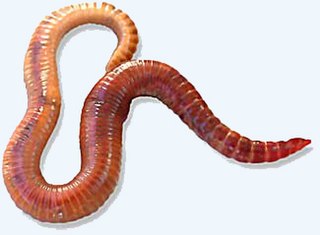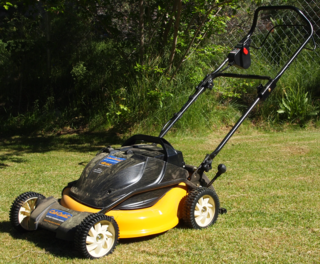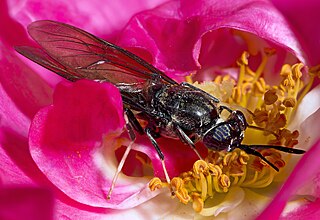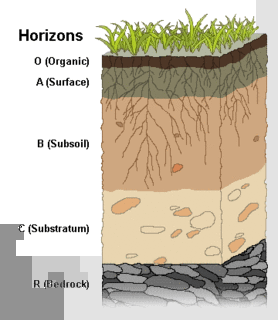 W
WBokashi is a process that converts food waste and similar organic matter into a soil amendment which adds nutrients and improves soil texture. It differs from traditional composting methods in several respects. The most important are:The input matter is fermented by specialist bacteria, not decomposed. The fermented matter is fed directly to field or garden soil, without requiring further time to mature. As a result, virtually all input carbon, energy and nutrients enter the soil food web, having been neither emitted in greenhouse gases and heat nor leached out.
 W
WCompost is a mixture of ingredients used to fertilize and improve the soil. It is commonly prepared by decomposing plant and food waste and recycling organic materials. The resulting mixture is rich in plant nutrients and beneficial organisms, such as worms and fungal mycelium. Compost improves soil fertility in gardens, landscaping, horticulture, urban agriculture, and organic farming. The benefits of compost include providing nutrients to crops as fertilizer, acting as a soil conditioner, increasing the humus or humic acid contents of the soil, and introducing beneficial colonies of microbes that help to suppress pathogens in the soil. It also reduces expenses on commercial chemical fertilizers for recreational gardeners and commercial farmers alike. Compost can also be used for land and stream reclamation, wetland construction, and landfill cover.
 W
WThis is a list of composting systems:
 W
WAerated Static Pile (ASP) composting, refers to any of a number of systems used to biodegrade organic material without physical manipulation during primary composting. The blended admixture is usually placed on perforated piping, providing air circulation for controlled aeration. It may be in windrows, open or covered, or in closed containers. With regard to complexity and cost, aerated systems are most commonly used by larger, professionally managed composting facilities, although the technique may range from very small, simple systems to very large, capital intensive, industrial installations.
 W
WBrown waste is any biodegradable waste that is predominantly carbon based. The term includes such items as grass cuttings, dry leaves, twigs, hay, paper, sawdust, corn cobs, cardboard, pine needles or cones, etc. Carbon is necessary to composting, which uses a combination of green waste and brown waste to promote the microbial processes involved in the decomposition process. The composting of brown waste sustainably returns the carbon to the carbon cycle.
 W
WClivus Multrum is a type of composting toilet and the name of a company that markets this brand name of composting toilets. "Clivus" is Latin for incline or slope; "multrum" is a Swedish composite word meaning "compost room", thus a "Clivus Multrum" is an inclined compost room.
 W
WCompost Everything: The Good Guide to Extreme Composting is a 2015 gardening book about extreme composting written by David the Good.
 W
WA composting toilet is a type of dry toilet that treats human waste by a biological process called composting. This process leads to the decomposition of organic matter and turns human waste into compost-like material. Composting is carried out by microorganisms under controlled aerobic conditions. Most composting toilets use no water for flushing and are therefore called "dry toilets".
 W
WDecomposition is the process by which dead organic substances are broken down into simpler organic or inorganic matter such as carbon dioxide, water, simple sugars and mineral salts. The process is a part of the nutrient cycle and is essential for recycling the finite matter that occupies physical space in the biosphere. Bodies of living organisms begin to decompose shortly after death. Animals, such as worms, also help decompose the organic materials. Organisms that do this are known as decomposers. Although no two organisms decompose in the same way, they all undergo the same sequential stages of decomposition. The science which studies decomposition is generally referred to as taphonomy from the Greek word taphos, meaning tomb. Decomposition can also be a gradual process for organisms that have extended periods of dormancy.
 W
WThe Ecuador composting method is a common composting practice in the lowlands of Ecuador and Peru. The compost pile is embedded on the tree trunk or banana stalks, with a pale erected in the middle. Organic matter is placed in layers on the trunks or stalks, each layer being covered by mud, or inlaid via different types of organic matter. When the pile is about 1.2 meters high, it is watered and covered by big leaves. After some time, when the compost pile settles down, the central pale is removed for aeration. This composting method is typically done in a small-scale, by indigenous villagers.
 W
WEcoPark is a waste-to-energy plant which burns waste from several London boroughs to provide electricity for the National Grid. It is located on the River Lee Navigation and bordered by the North Circular Road, in Edmonton in the London Borough of Enfield. It is also known as Edmonton EcoPark.
 W
WEisenia fetida, known under various common names such as manure worm, redworm, brandling worm, panfish worm, trout worm, tiger worm, red wiggler worm, etc., is a species of earthworm adapted to decaying organic material. These worms thrive in rotting vegetation, compost, and manure. They are epigean, rarely found in soil. In this trait, they resemble Lumbricus rubellus.
 W
WGrasscycling is a method of handling grass clippings by leaving them to decompose on the lawn when mowing. The term combines "grass" and "recycling", and had come into use by at least 1990 as part of the push to reduce the huge quantities of clippings going into landfills, up to half of some cities' summertime waste flow, as 1,000 square feet of lawn can produce 200 to 500 pounds of clippings a year.
 W
WHermetia illucens, the black soldier fly, is a common and widespread fly of the family Stratiomyidae.
 W
WHügelkultur is a horticultural technique where a mound constructed from decaying wood debris and other compostable biomass plant materials is later planted as a raised bed. Adopted by permaculture advocates, it is suggested the technique helps to improve soil fertility, water retention, and soil warming, thus benefiting plants grown on or near such mounds.
 W
WIn soil science, humus denominates the fraction of soil organic matter that is amorphous and without the "cellular cake structure characteristic of plants, micro-organisms or animals". Humus significantly affects the bulk density of soil and contributes to its retention of moisture and nutrients. Although the terms humus and compost are informally used interchangeably, they are distinct soil components with different origins; humus is created through anaerobic fermentation, while compost is the result of aerobic decomposition.
 W
WA mulch is a layer of material applied to the surface of soil. Reasons for applying mulch include conservation of soil moisture, improving fertility and health of the soil, reducing weed growth and enhancing the visual appeal of the area.
 W
WThe nematodes or roundworms constitute the phylum Nematoda, with plant-parasitic nematodes also known as eelworms. They are a diverse animal phylum inhabiting a broad range of environments. Taxonomically, they are classified along with insects and other moulting animals in the clade Ecdysozoa, and unlike flatworms, have tubular digestive systems with openings at both ends. Like tardigrades, they have a reduced number of Hox genes, but as their sister phylum Nematomorpha has kept the ancestral protostome Hox genotype, it shows that the reduction has occurred within the nematode phylum.
 W
WNight soil is a historically used euphemism for human excreta collected from cesspools, privies, pail closets, pit latrines, privy middens, septic tanks, etc. This material was removed from the immediate area, usually at night, by workers employed in this trade. Sometimes it could be transported out of towns and sold on as a fertilizer.
 W
WOligochaeta is a subclass of animals in the phylum Annelida, which is made up of many types of aquatic and terrestrial worms, including all of the various earthworms. Specifically, oligochaetes comprise the terrestrial megadrile earthworms, and freshwater or semiterrestrial microdrile forms, including the tubificids, pot worms and ice worms (Enchytraeidae), blackworms (Lumbriculidae) and several interstitial marine worms.
 W
WOrganopónicos or organoponics is a system of urban agriculture using organic gardens. It originated in Cuba and is still mostly focused there. It often consists of low-level concrete walls filled with organic matter and soil, with lines of drip irrigation laid on the surface of the growing media. Organopónicos is a labour-intensive form of local agriculture.
 W
WWalter Schmid is a Swiss entrepreneur. He is merited with the development of the Kompogas-Process around 1989, and the Kompogas company founded in 1991 both well-known in Switzerland. The seat of his construction company is Glattbrugg.
 W
WSebakh is an Arabic word that translates to "fertilizer". In English, the term is primarily used to describe decomposed mudbricks from archaeological sites, which is an organic material that can be employed both as an agricultural fertilizer and as a fuel for fires.
 W
WUsed coffee grounds is the result of brewing coffee, and are the final product after preparation of coffee. Used coffee grounds are generally regarded as waste, and is usually thrown away or composted. In the late 19th century, used coffee grounds were used to adulterate pure coffee.
 W
WVermicompost (vermi-compost) is the product of the decomposition process using various species of worms, usually red wigglers, white worms, and other earthworms, to create a mixture of decomposing vegetable or food waste, bedding materials, and vermicast. This process is called vermicomposting, while the rearing of worms for this purpose is called vermiculture.
 W
WIn agriculture, windrow composting is the production of compost by piling organic matter or biodegradable waste, such as animal manure and crop residues, in long rows (windrows). This method is suited to producing large volumes of compost. These rows are generally turned to improve porosity and oxygen content, mix in or remove moisture, and redistribute cooler and hotter portions of the pile. Windrow composting is a commonly used farm scale composting method. Composting process control parameters include the initial ratios of carbon and nitrogen rich materials, the amount of bulking agent added to assure air porosity, the pile size, moisture content, and turning frequency.